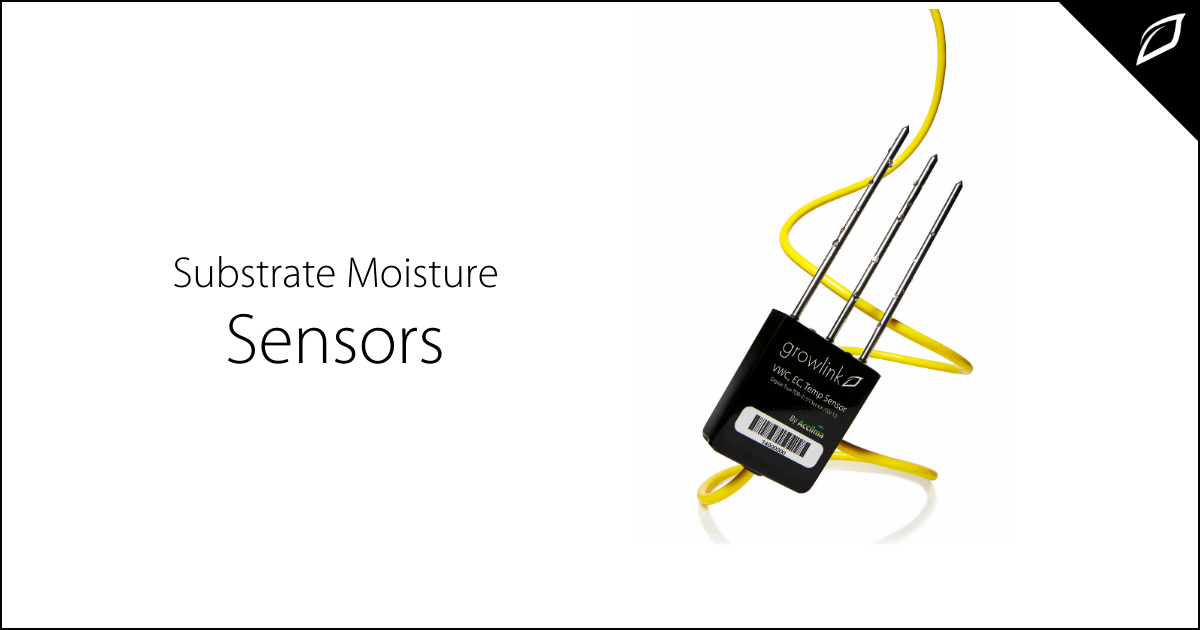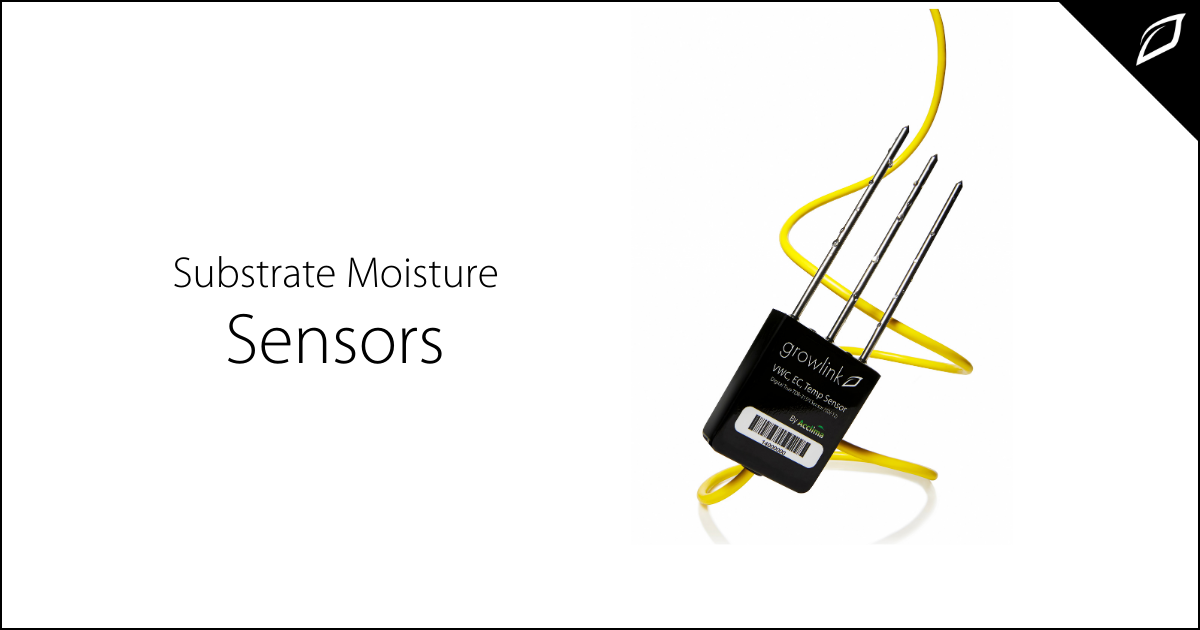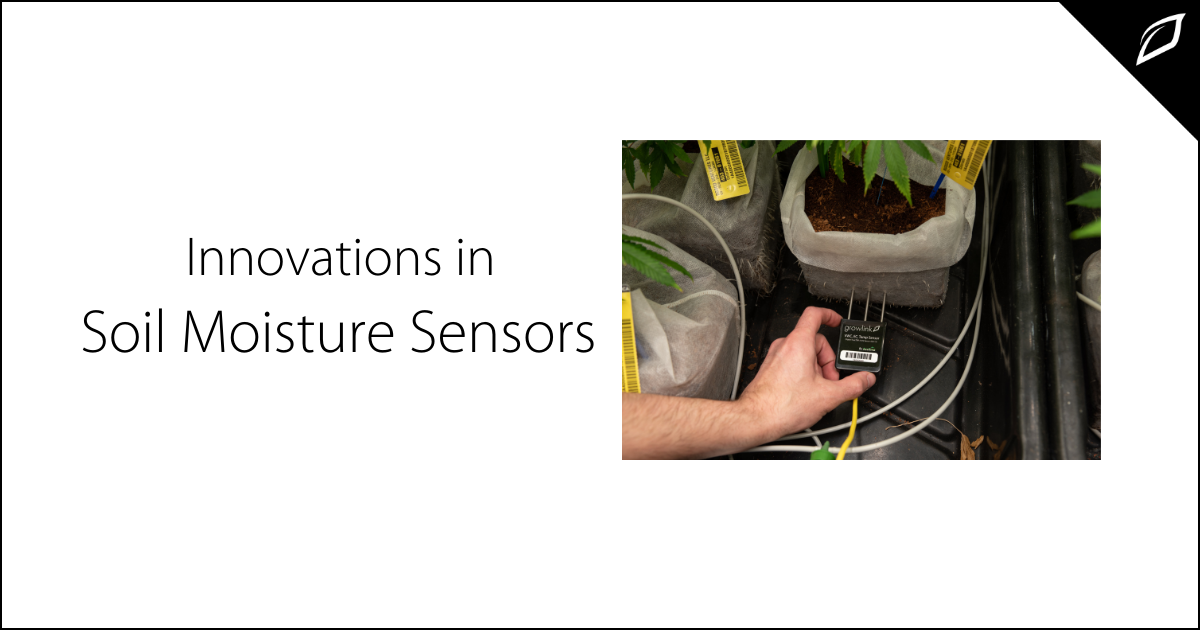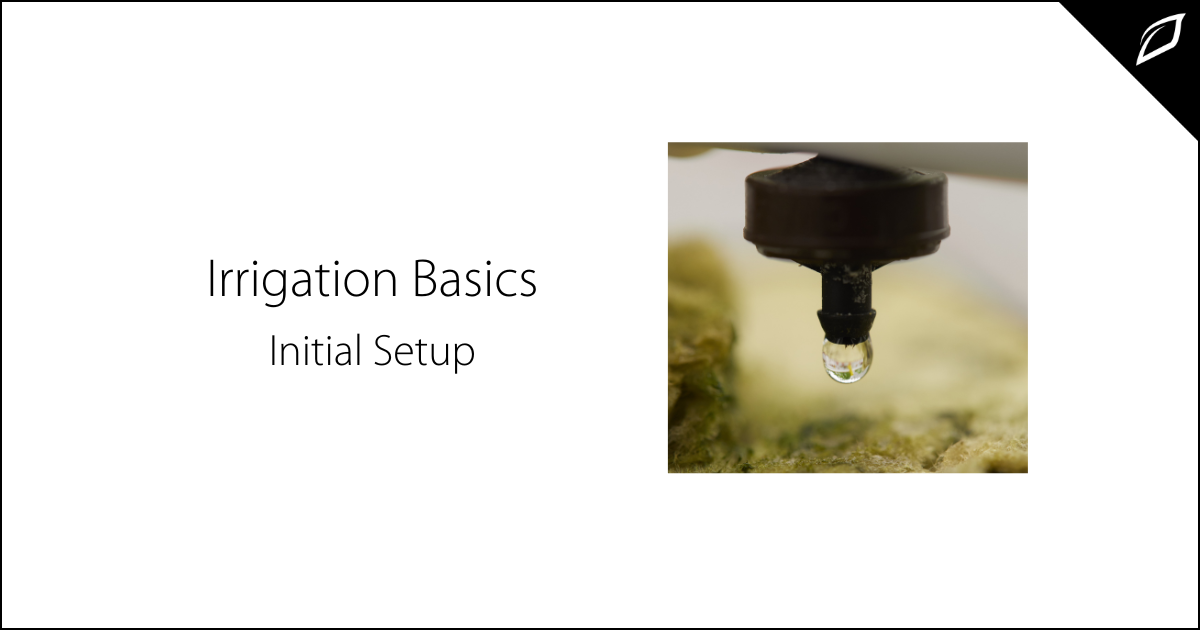Innovations in Soil Moisture Sensors
For decades, growers have used technology to predict and increase yields. Grow software, sensors, controllers, data analytics, and fertigation help...

Agricultural technology constantly evolves by refining processes, upgrading systems, and improving hardware and software. Substrates, the medium your crops are grown in, provide an opportunity for monitoring through substrate moisture sensors. Many growers face plant nutrition challenges that affect plant quality and profitability. Monitoring water content, temperature, and electrical conductivity in your substrate provide critical crop-level data for farmers and growers.
What is a substrate moisture sensor?
A substrate moisture sensor, or TDR sensor, typically uses metal probes with sensors, which are inserted into the root zone of crops to measure temperature, WC, and EC in real-time. There are many to choose from, but the most popular for indoor grows are connected to sophisticated software that can also automate certain tasks.
What does a substrate moisture sensor measure?
There are three things to measure at your crops' root zone: the water content or WC, the electrical conductivity or EC, and temperature. Let's examine them individually.
Water Content
Substrate moisture and its ability to support plant growth is a primary determinant in cultivation productivity. Not enough moisture may result in plant death or a smaller harvest. Too much can cause root rot, and encourage fungus or mold to grow, and wastes valuable resources like water and nutrients.
Precise control over the root zone environment, for both water and nutrients, leads to more robust crops and higher yields. By taking measurements, observing trends, and using sensor data to make irrigation decisions, you can significantly increase productivity and reduce overhead.
Electrical Conductivity
The EC or electrical conductivity of the substrate, nutrient solution, and irrigation water is an important factor influencing your crop's root zone environment. These factors have a significant impact on plant growth, quality, and overall yield. Constantly monitoring the root zone in real-time allows you to deliver nutrients to crops more accurately and efficiently.
Temperature
Another important aspect of the root zone to monitor is the temperature. Applying heat directly to the growing substrate rather than heating the ambient air can benefit crops with a faster production time, thriving plants, and energy savings.
Why use a substrate moisture sensor?
Many growers face plant nutrition challenges that influence plant quality and profitability.
Employing multiple substrate sensors at your crops' root zone allows you to precisely understand what nutrients your crops need to thrive.
Benefits of using substrate moisture sensors.
In combination with advanced automation equipment, monitoring your crops' root zone enables you to create custom alerts when predetermined levels are higher or lower than your desired level—trigger irrigation events based on data or determine which plants require drainage to avoid compromising root development.
The top of the line systems can be accessed and adjusted via a mobile app, allowing farmers to make crop decisions from anywhere, anytime, saving time and money
.

For decades, growers have used technology to predict and increase yields. Grow software, sensors, controllers, data analytics, and fertigation help...

As indoor commercial cultivation becomes the gold standard in cannabis grows, environmental control systems' demand increases. Also known as...

Picture this; you’ve built out your indoor grow room or vertical farm to perfection and loaded in multiple different genetics that you’ve been dying...